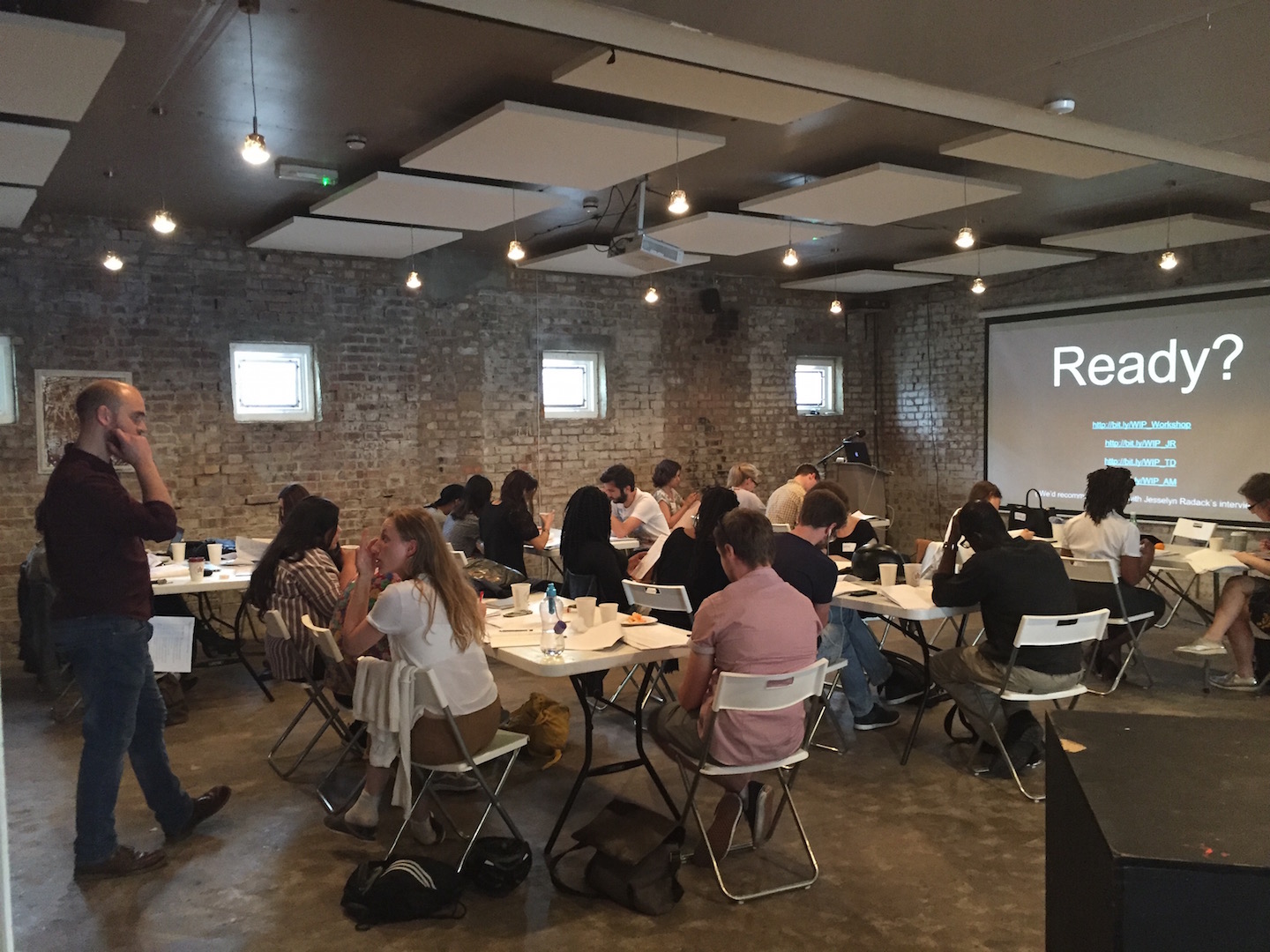Intro
Background
This e-book is based on the Workshop "How to craft compelling stories out of video interviews?". Which was a collaboration between Pietro Passarelli and Niels Ladefoged.
Niels has been curating the Whistle Blower Interview Project in collaboration with the centre for investigative journalism in London whose interviews where used in the workshop.
In 2016 Pietro was a Knight-Mozilla fellow for 10 months at Vox Media, and this workshop has had a number of editions that year supported by Open News in London, New York, at Buenos Aires Hacks/Hackers Media Party, SRCCON in Portland, and MozzFest in London.
This was the description of the original workshop.
Using some of the videos from the Whistle Blowers Interview Archive, we’ll take an hands on approach to explore key concepts, ideas and techniques to identify narrative points, test out story ideas, and craft a compelling story.This workshop focusses on the underlying evergreen storytelling principles that transcend the medium, so no knowledge of video editing required, just curiosity towards story telling principles and techniques.
Participants will be divided into groups of 3 to 4 people. The aim for each group is to produce a 3 to 5 minutes video, given 3 short video interviews (roughly 15 min each) accompanied by their corresponding time-coded transcriptions.
Key story telling principles and techniques will be introduced to facilitate the process. The aim of the workshop is for the participants to gain an hands on insight into the process of interviewed based documentary story crafting rather then producing a polished final product.

Picture from London workshop, July 2016 at Newspeak House.
For the purpose of this e-book, we consider documentary production as the main use case but this process can be used in the context of other interview based media, eg podcasts, radio, factual and news production.
The e-book echoes the workshop and follows a hands on approach. You can follow along using transcriptions from the Whistleblower Interview Project, or you can work with your own material if you are currently working on an interview based production. You can also chose to skip the hands on parts. But as they say practice makes perfect.
For optimal learning outcome, the paper-editing process is introduced in its analogue, paper, scissors and tape form. This is the optimal approach to maximise the learning experience and familiarise with key story concepts, especially if you are working on this in a small group.
However for day to day work, we recommend using autoEdit2 the digital paper-editing software mentioned in the last section of the book.
If while reading this e-book, you find yourself wondering what are the implications of editing "raw interviews" and wether doing so makes them any less true, (a common question during the workshops) and you want some background on the key ideas in documentary theory and practice, you can check out this blog post "Representing Reality: Key ideas in documentary theory and practice" to explore some perspectives a round the question of objectivity/subjectivity of the documentary film-maker.
Overview
The e-book is divided into four main parts.
Part 1 - Paper editing
In part one we introduce the paper-editing process. We start with an overview of the documentary production to position where paper-editing fits in this context.
In the next section screen writing technique of writing from the inside out is presented as a key reason of why you should bother with Paper-editing.
In the last we present an section an overview of paper-editing process.
Part 2 - Paper editing & Story concepts
In the second part we revisit the paper-editing process introducing key story concepts that help crafting compelling narratives.
Story concepts considered are:
- Story terminology such as exposition, train, theme, story Arc, and distinction between plot and character driven stories.
- What makes a compelling character and how to explore the different levels of conflict.
- How to identify and exploit the gap between expectations and reality to drive the narrative.
- The Quest or Narrative Arc.
- The Three act structure.
- We revisit exposition in a bit more details.
- We look into how the ladder of abstraction applies to paper editing.
- The section concludes with an annotated bibliography of material that contribute to this guide, for a deeper div into the topic.
Part 3 - Two column Script
In the third section we make an optional side note on how a two column script can be used in paper-editing to decide on b-roll/cutaways images and video footage to use along side our interviews.
Part 4 - Digital Paper Editing
In the fourth and last part, we introduce autoEdit.io a digital paper-editing software can be used for day to day production of video interviews.
Acknowledgements
A big thank you to:
Open News for supporting the 2016 series of workshop that inspired this book.
